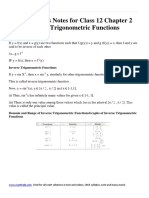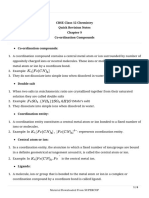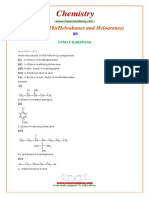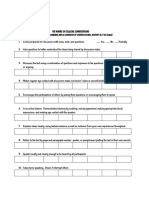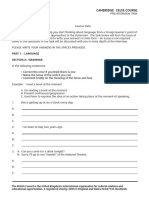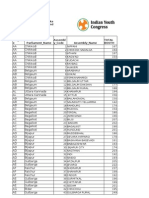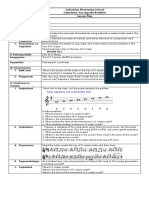0% found this document useful (0 votes)
6K views22 pagesClass 12 Revision Notes Continuity and Differentiability
The document discusses continuity and differentiability in mathematics. It defines continuity as a function being equal to its left-hand and right-hand limits at a point. A function is discontinuous if its limits do not exist or are not equal to the function value. There are different types of discontinuities such as removable, non-removable, and oscillatory. The document also discusses differentiability, defined as a function's derivative existing at a point, and lists many common continuous and differentiable functions.
Uploaded by
Amaan ShaikhCopyright
© © All Rights Reserved
We take content rights seriously. If you suspect this is your content, claim it here.
Available Formats
Download as PDF, TXT or read online on Scribd
0% found this document useful (0 votes)
6K views22 pagesClass 12 Revision Notes Continuity and Differentiability
The document discusses continuity and differentiability in mathematics. It defines continuity as a function being equal to its left-hand and right-hand limits at a point. A function is discontinuous if its limits do not exist or are not equal to the function value. There are different types of discontinuities such as removable, non-removable, and oscillatory. The document also discusses differentiability, defined as a function's derivative existing at a point, and lists many common continuous and differentiable functions.
Uploaded by
Amaan ShaikhCopyright
© © All Rights Reserved
We take content rights seriously. If you suspect this is your content, claim it here.
Available Formats
Download as PDF, TXT or read online on Scribd
/ 22











